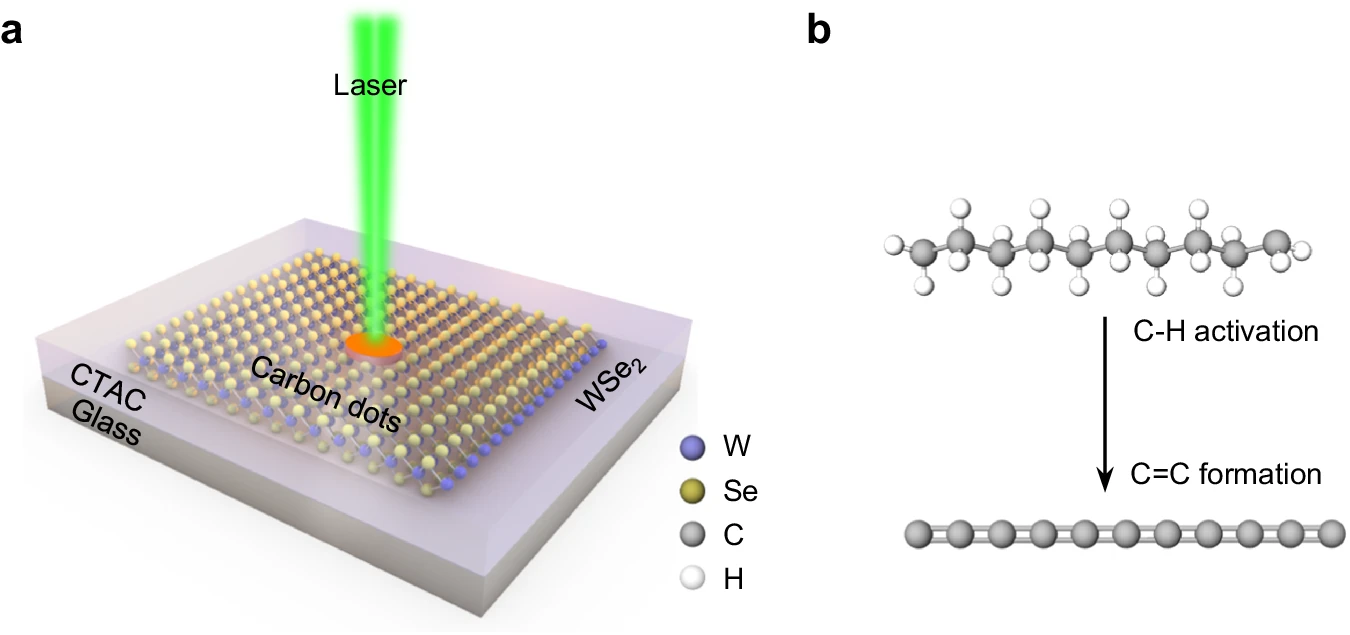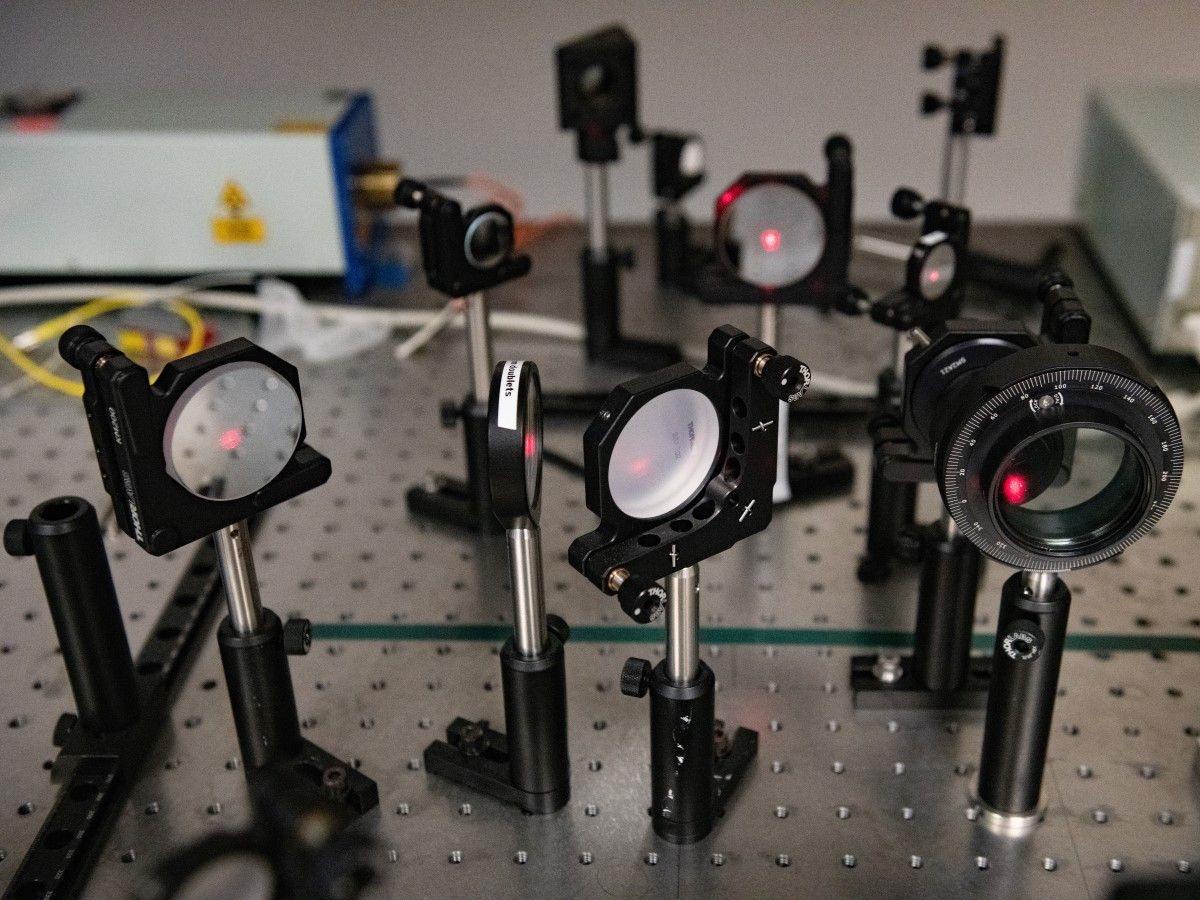This technology transforms plastic waste into valuable materials
Published by Cédric,
Article author: Cédric DEPOND
Source: Nature Communication
Other Languages: FR, DE, ES, PT
Article author: Cédric DEPOND
Source: Nature Communication
Other Languages: FR, DE, ES, PT
Follow us on Google News (click on ☆)
Using a laser, researchers have succeeded in breaking down certain plastics into their fundamental elements, allowing them to be reused as carbon nanomaterials. This innovative process opens up exciting prospects for industry, particularly in the fields of information storage, medical imaging, and pharmaceuticals.

a - Diagram showing the light-induced transformation of CTAC on an atomic layer of WSe2.
b - Diagram showing the photochemical reaction process involving the activation of C–H bonds and the formation of C=C bonds.
Researchers from various American and Japanese institutions have developed a method to break down plastics using a low-intensity laser.
Their work, published in Nature Communication, is based on the use of transition metal dichalcogenides (TMD) as catalysts. These two-dimensional materials play a key role in the C-H activation reaction, a chemical process where the bonds between carbon and hydrogen atoms are broken, allowing new chemical bonds to be created.
The main advantage of this method lies in its ability to produce luminescent carbon dots, a form of carbon nanomaterials with adaptable and versatile properties. These dots can be modified to serve as the basis for different customized materials, meeting various industrial needs. For instance, these nanomaterials could be used as memory units in future computer storage systems, or to enhance medical imaging techniques due to their low toxicity and biocompatibility.
Despite its promising beginnings, this technology still requires improvements to be viable on a large scale. Researchers must optimize the C-H activation reaction and develop effective ways to adapt this process to industrial needs. Nonetheless, this innovation could represent a significant advance in the fight against plastic pollution by transforming this waste into valuable resources.

Jingang Ling, a postdoctoral researcher at the University of Berkeley and the lead author of the study, emphasizes the importance of this work: "It's very exciting to potentially take plastics that might never decompose on their own and turn them into something very useful for many industries." Continuing this research could well lead to practical applications in the near future.